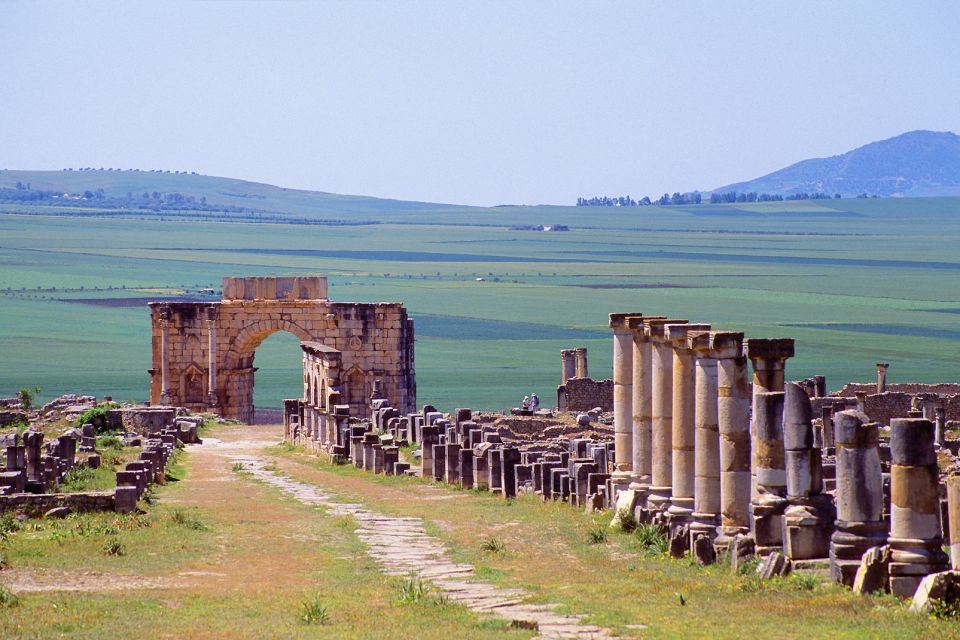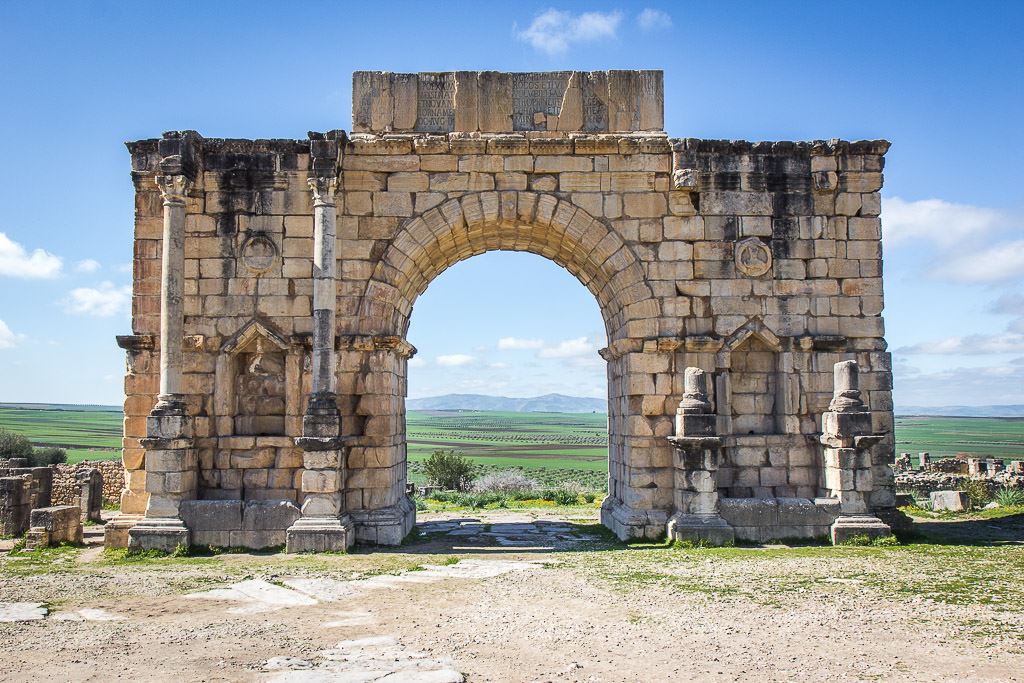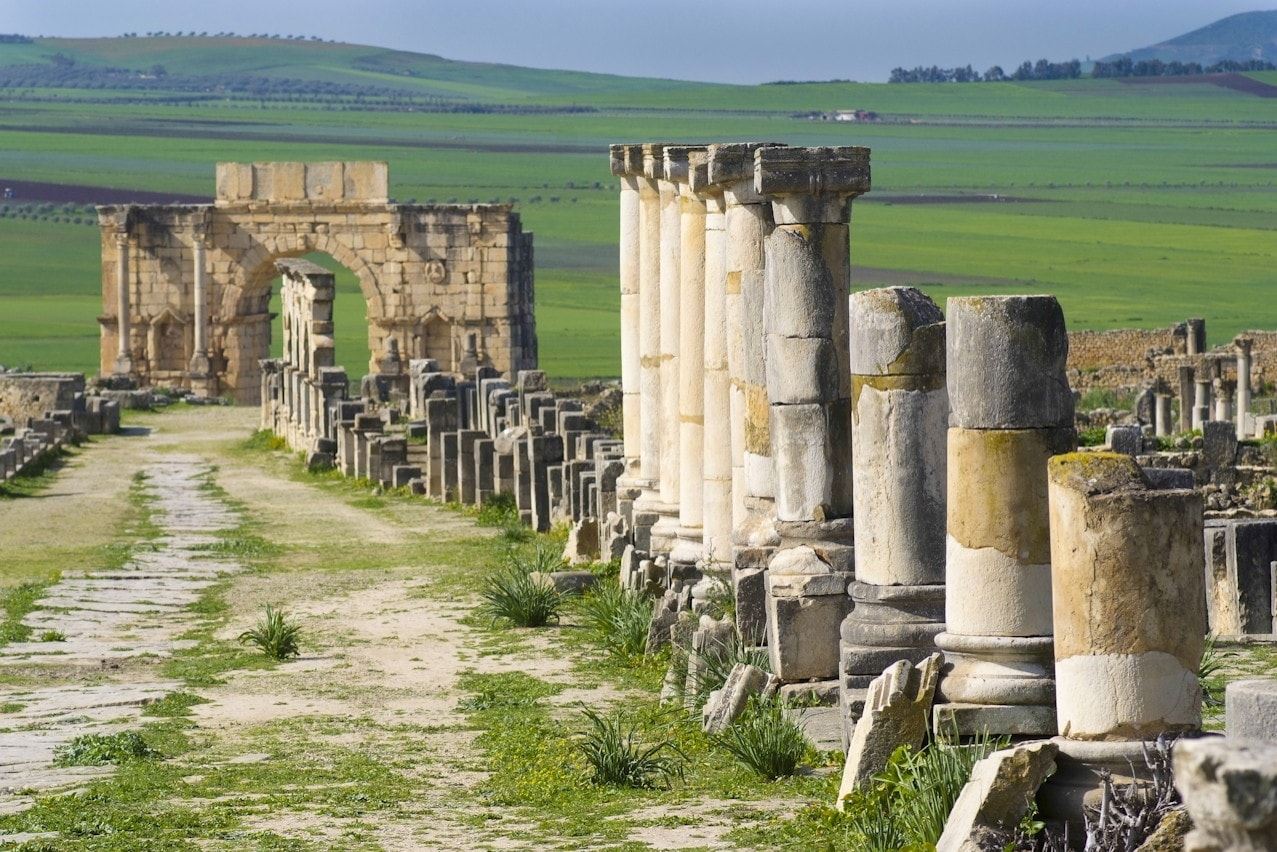Volubilis Ancient City

The Roman ruins of Volubilis—the most well-preserved archaeological site in Morocco and a UNESCO World Heritage Site since 1997—sit in the middle of a fertile plain about thirty-three kilometers noth of Meknès. Filled with many beautiful mosaics, Volubilis is at its magical best in the springtime, when wild flowers blossom amid the ruins, and the surrounding fields are green and lush. Only about half of the forty-hectare site has been excavated, and the best-known monuments lie in the northern part of the site, opposite the southern entrance. Feel free to wander the entire site at your leisure!

Olive presses at the most ancient part of the site indicate the economic basis of Volubilis—look for the flat presses and stone storage vats scattered around. Wealthy citizens had private olive presses, and the remains of their villas house stunning examples of ancient mosaic art. The House of Orpheus is the finest and largest, containing a mosaic of Orpheus charming animals with his lute, accompanied by a dolphin mosaic in the dining room. The private hammam (bath) has a caldarium (hot room) with steam pipes still visible, along with a tepidarium (warm room) and frigiarium (cold room), as well as a solarium. The House of Acrobat sports a mosaic of an athlete being awarded a prize for dismounting and jumping back on his horse as it raced along. To the west stands the House of the Dog, famous not for its mosaics but for its giant carved phallus, once serving as a brothel for weary warriors. Further along stands the House of the Ephebus, containing an incomplete mosaic of Bacchus in a chariot drawn by panthers. The nearby House of the Columns sports columns arranged in a circle around an interior court, all in different styles. Next door is the House of the Knight, with an incomplete mosaic of Bacchus and a naked Ariadne. The next four houses are named for their stunning mosaics: the House of the Labors of Hercules, the House of Dionysus and the Four Seasons, the House of the Bathing Nymphs, and the House of the Wild Beasts. The House of Venus, home of King Juba II, sports two particularly fine mosaics: the Abduction of Hylas by the Nymphs and Diana Bathing.

Next to the House of Orpheus are the remains of Galen’s Thermal Baths, with the sophisticated system of under-floor heating clearly visible, along with the remains of communal toilets. Perched on the site’s highest point are the Capitol, Basilica, and Forum. The Capitol, dedicated to Jupiter, Juno, and Minerva, dates to 218 CE, while the reconstructed columns of the Basilica are today topped with storks’ nests. Around the Forum is a series of plinths carved with Latin inscriptions. The marble Triumphal Arch was constructed in 217 CE in honor of Emperor Caracalla and his mother, Julia Domna. Be sure to climb the small hill just to the east, as it provides a magnificent view of the entire site.

